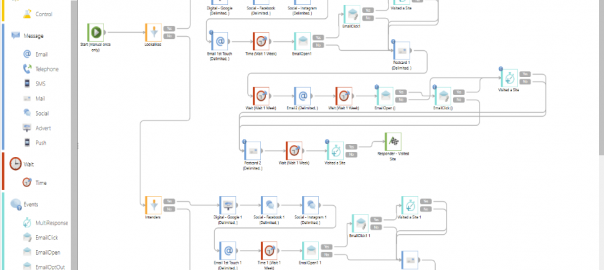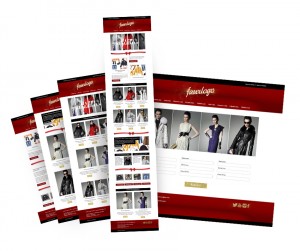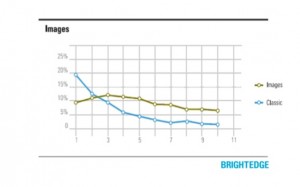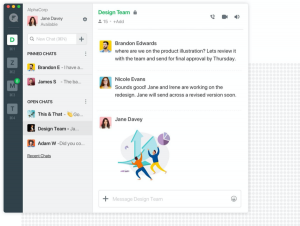Did you know that email marketing is about 40 years old? The first marketing email was sent nearly 40 years ago by a marketer named Gary Thuerk from Digital Equipment Corporation. Thuerk sent an email promoting his company to roughly 400 people, which generated a huge spike in emails. (Yes Lifecycle Marketing)
Today, email is as strong as ever, even more so as brands have shifted to digital channels and communications with the rise of the Covid19 pandemic. More than 55% of marketers have reported receiving the best ROI from email campaigns.
In research by Seventh Sense, almost half of survey participants said they plan to send more emails to communicate with customers and prospects as a result of the Covid crisis.
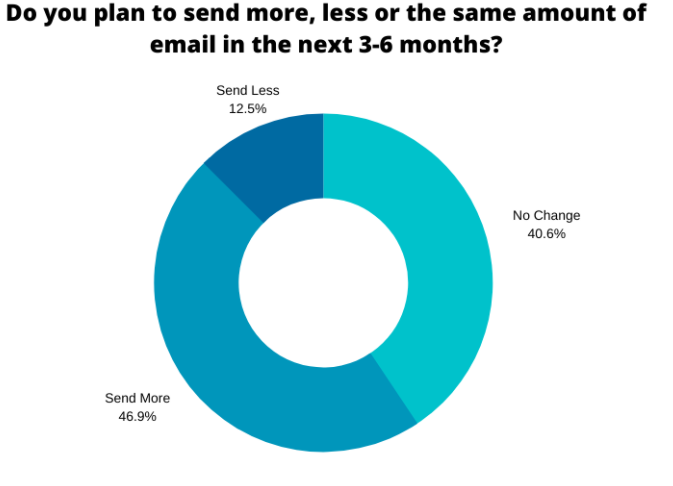
According to HubSpot, email marketers are sending 27% more emails than they then did pre-coronavirus. Marketing platform LiveIntent recently released data showing email newsletter engagement has also grown during the pandemic, with gains highest for email newsletters that cover finance (43%), hard news (38%) and shopping (83%).
Email Marketing Statistics
Email marketing has been proven to work time and again in terms of higher ROI, customer engagement, brand loyalty and more. Take a look at some of these amazing statistics on email performance:
- Marketers who use segmented campaigns note as much as a 760% increase in revenue. (Campaign Monitor, 2019)
- 78% of marketers have seen an increase in email engagement over the last 12 months (Not Another State of Marketing, 2020)
- 31% of B2B marketers say email newsletters are the best way to nurture leads. (Content Marketing Institute, 2020)
- 80% of business professionals believe that email marketing increases customer retention. (Emarsys, 2018)
- 59% of respondents say marketing emails influence their purchase decisions. (SaleCycle, 2018)
- 59% of marketers say email is their biggest source of ROI. (Emma, 2018)
- For every $ 1 spent, email marketing generates $ 32 in ROI. (Oberlo)
- Conversion rates for emails are higher than social media, direct traffic, and search. (Smart Insights)
- 81% of businesses say that email drives customer acquisition, and 80% for retention. (Emarsys)
- Email offers result in shoppers spending 138% on their purchases. (Disruptive Advertising)
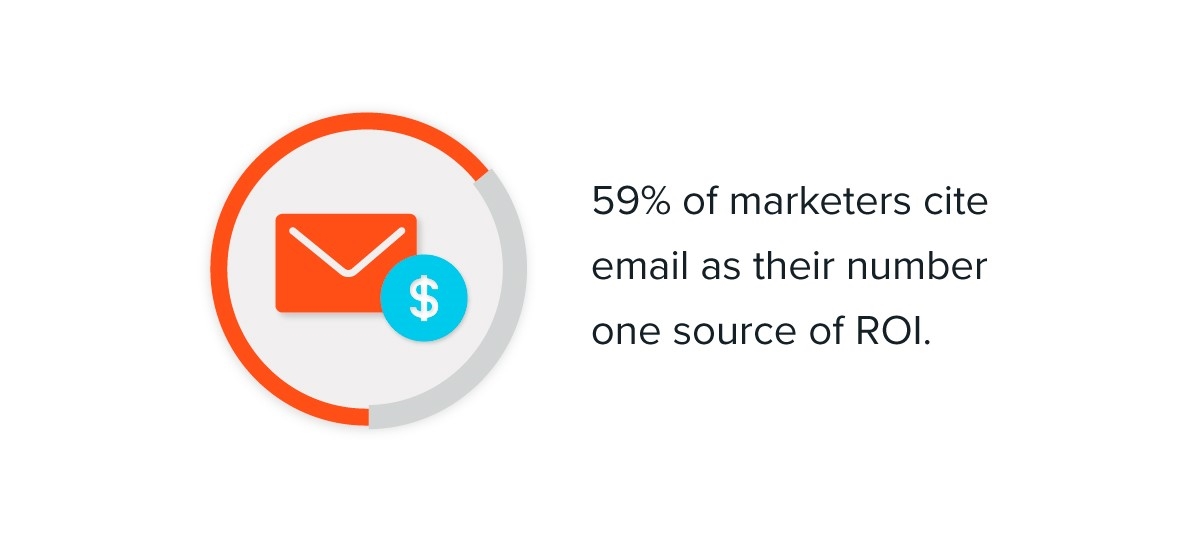
Marketers Want to Improve Personalization
One area marketers cited as needing improvement is the ability to personalize emails, as stated by 67% of marketers in eConsultancy and Upland Adestra’s research.
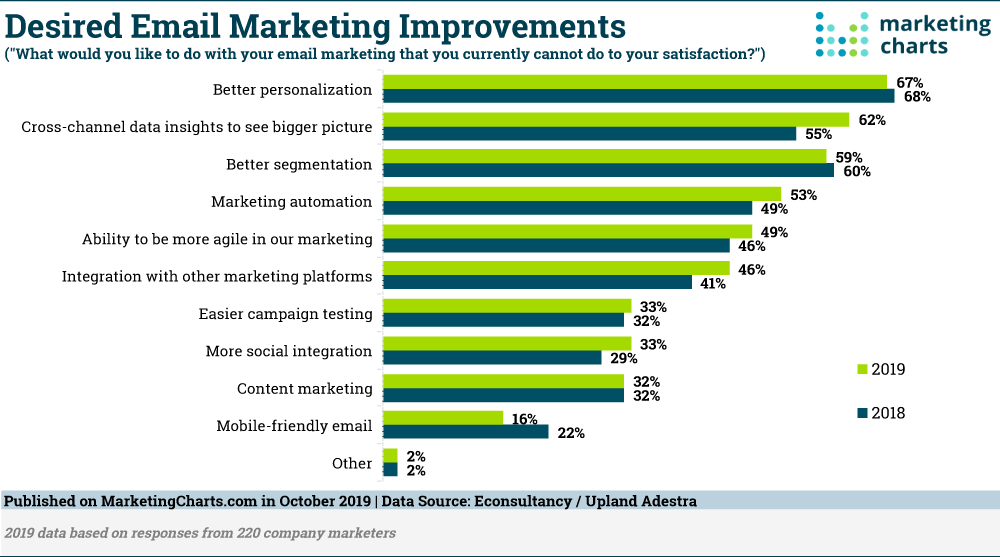
Integrating data continues to be the biggest challenge for companies trying to implement personalization according to by 51% of respondents.
Email marketing is the most common channel for personalization, however, in research by Ascend2, marketers agreed that personalized emails are the most effective but also the most difficult to deploy.
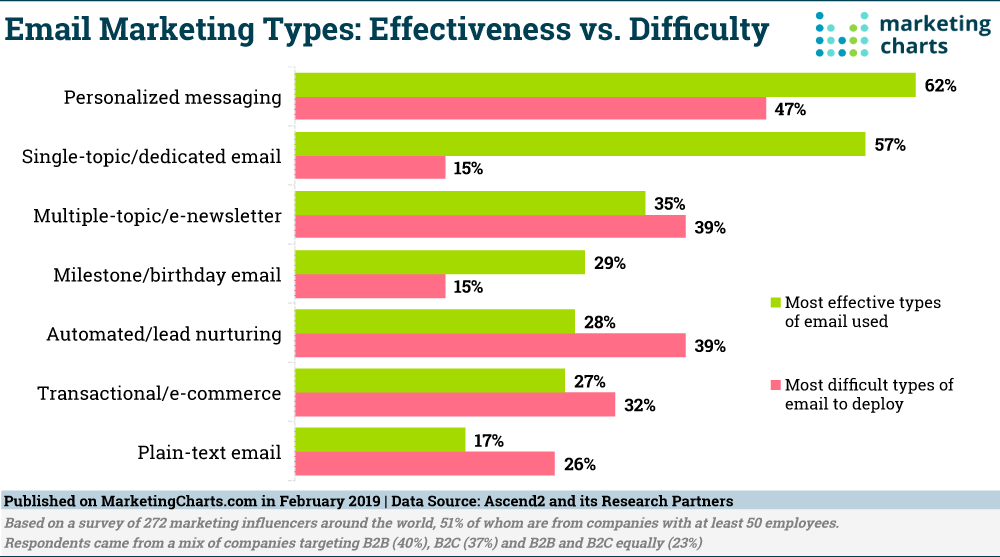
In a 2018 research study by Evergage, marketers are using personalization in the following ways:
- 76% – Tailored messaging or promotions by audience segment
- 51% – Product or content recommendations by audience segment
- 49% – Email messages personalized at spend time
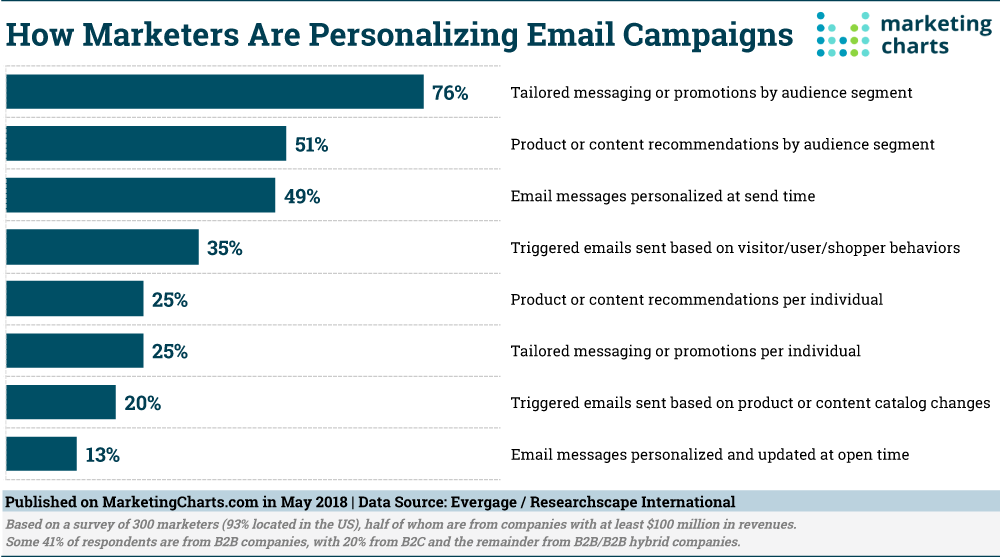
Approximately 90% of U.S. consumers have stated that they find marketing personalization, such as personalized emails, to be “very” or “somewhat” appealing. (source)
Check out these additional statistics on email personalization
- Birthday emails can generate approximately 342% more revenue per email than your standard promotional emails. Experian)
- Personalized email marketing messages tend to generate an average ROI of 122%. (Instapage)
- Personalized email subject lines have the potential to generate approximately 50% higher open rates than standard email subject lines. (Oberlo)
In other research by Janrain and Blue Research, 96% of consumers say they receive mistargeted information or promotions. The repercussions can be costly, resulting in lost customers and a big hit to the bottom line.
According to the research, consumers stated that types of mistargeting include:
- 71% have received, “An offer that clearly shows they do not know who I am.”
- 51% have received, “Mixed info across different methods of communication.”
- 41% have seen, “‘Mistakes made about basic information about me.”
Consumers expect brands to know them and are quick to act when they receive mistargeted and inconsistent communications. 94% of consumers have taken one or more of these actions:
- 68%: Automatically delete emails
- 54%: Unsubscribe from emails
- 45%: Categorize emails as ‘junk’ or ‘spam’
- 29%: Are less likely to buy products
- 13%: Visit website less frequently
- 10%: Never visit website again
Automated Email Journeys
Using automated journey management, email marketers can more easily integrate personalization into their email strategies.
Sending triggered emails based on a consumer’s behavior is effective for both acquisition and transforming customers into loyal brand advocates.
Check out these stats on the effectiveness of email marketing automation:
- Automated emails get 119% higher click rates than broadcast emails. (Epsilon)
- B2C marketers who connect with customers through automated emails see conversion rates as high as 50%. (eMarketer)
- Relevant emails drive 18x more revenue than broadcast emails. (Jupiter Research)
- Retailers who send a series of welcome emails see 13% more revenue than those who send just one. (Internet Retailer 500)
While many brands are very familiar with welcome emails or order confirmations, email automation and personalization must be holistically integrated throughout the journey to increase conversions and boost retention.
Consider using a customer data platform to automate email journeys. Using a CDP, marketers can easily create campaigns that recognize if customers have visited a brand’s website, browsed certain product categories, opened emails or visited stores.
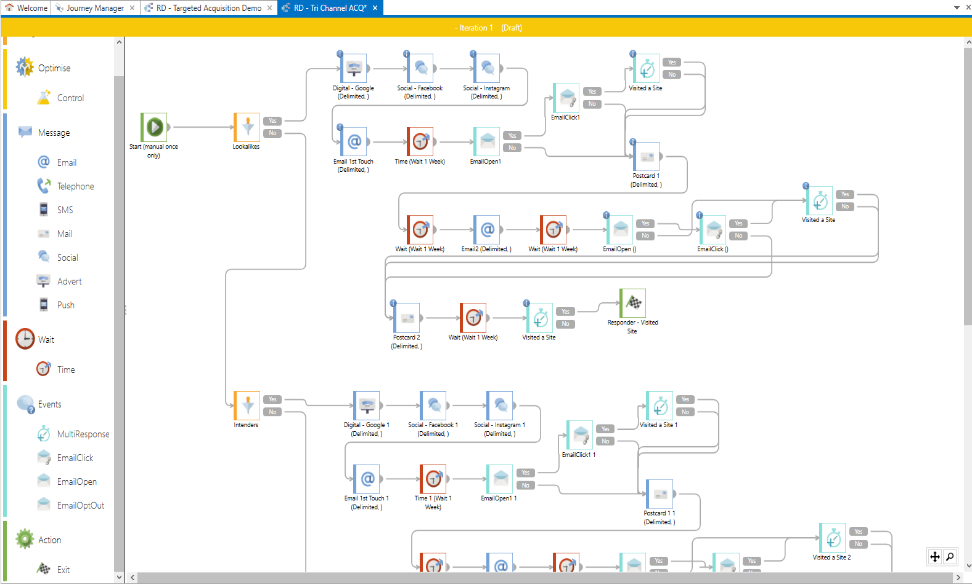
Clearly, email is a highly effective tool in today’s marketplace to reach consumers who are increasingly shopping online and using digital channels to interact with brands. If they have not already done so, brands will need to put processes in place to integrate data in order to deliver the types of personalized communications consumers crave.
Interested in learning more about V12’s industry leading email data and deployment solutions? Click here to learn more.
Digital & Social Articles on Business 2 Community
(57)
